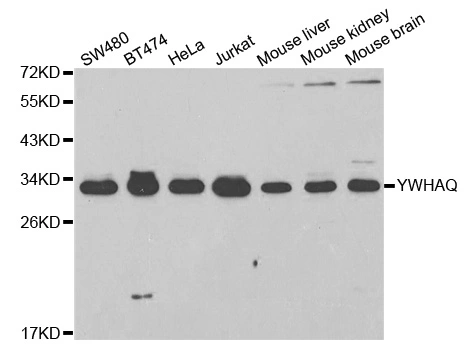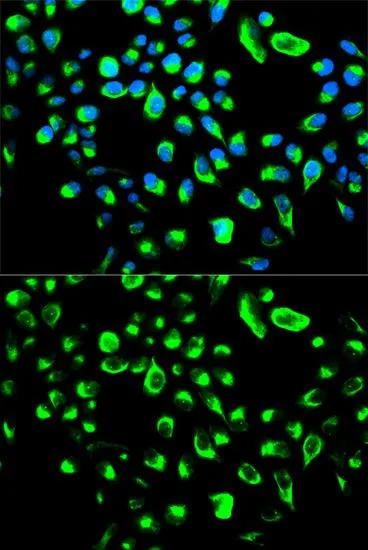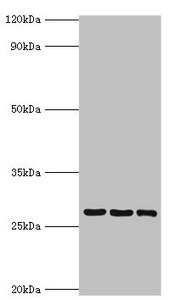
WB analysis of various sample lysates using GTX32983 14-3-3 theta antibody. Dilution : 1:1000 Loading : 25microg per lane
14-3-3 theta antibody
GTX32983
ApplicationsImmunoFluorescence, Western Blot, ImmunoCytoChemistry
Product group Antibodies
TargetYWHAQ
Overview
- SupplierGeneTex
- Product Name14-3-3 theta antibody
- Delivery Days Customer9
- Application Supplier NoteWB: 1:500 - 1:2000. ICC/IF: 1:50 - 1:100. *Optimal dilutions/concentrations should be determined by the researcher.Not tested in other applications.
- ApplicationsImmunoFluorescence, Western Blot, ImmunoCytoChemistry
- CertificationResearch Use Only
- ClonalityPolyclonal
- ConjugateUnconjugated
- Gene ID10971
- Target nameYWHAQ
- Target descriptiontyrosine 3-monooxygenase/tryptophan 5-monooxygenase activation protein theta
- Target synonyms14-3-3; 14-3-3 protein tau; 14-3-3 protein T-cell; 14-3-3 protein theta; 14-3-3 theta; 1C5; HS1; protein, theta; tyrosine 3-monooxygenase/tryptophan 5-monooxygenase activation protein, theta polypeptide
- HostRabbit
- IsotypeIgG
- Protein IDP27348
- Protein Name14-3-3 protein theta
- Scientific DescriptionThis gene product belongs to the 14-3-3 family of proteins which mediate signal transduction by binding to phosphoserine-containing proteins. This highly conserved protein family is found in both plants and mammals, and this protein is 99% identical to the mouse and rat orthologs. This gene is upregulated in patients with amyotrophic lateral sclerosis. It contains in its 5 UTR a 6 bp tandem repeat sequence which is polymorphic, however, there is no correlation between the repeat number and the disease. [provided by RefSeq, Jul 2008]
- Storage Instruction-20°C or -80°C,2°C to 8°C
- UNSPSC12352203







